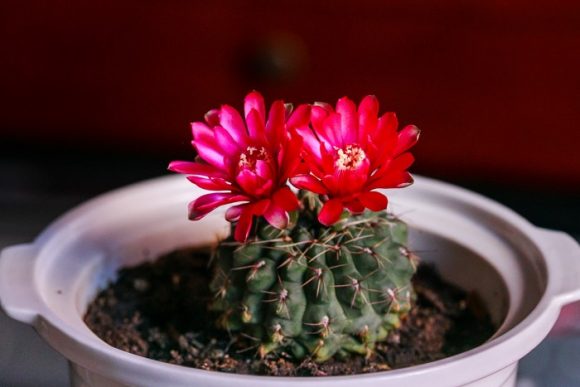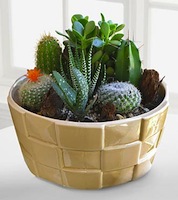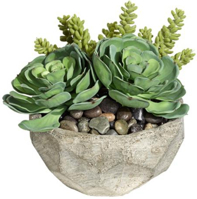- Geraniums: Two Floral Families with Striking Flowers - December 15, 2019
- Festive Flowers for a Dazzling Winter Bouquet or Centerpiece - December 14, 2019
- Forcing Flower Bulbs For the Holiday Season - December 13, 2019
With over 1500 varieties, cacti are distinctive members of the succulent family. Botanists estimate that these fascinating plants have been growing in various forms for at least 20-30 million years. This diverse, yet easily identifiable, group of plants has become nearly synonymous with southwestern culture throughout the Americas.
Cactus plants have evolved to store large quantities of water within their flesh. After the rainy season, some cactus plants may be up to ninety percent water by volume. Most of this water is stored in the stem of the plant and slowly released throughout the plant in arid months.
The vast majority of cactus species are leafless, with photosynthesis being done in the plant’s stem. Over the years, highly modified leaves called spines have developed to protect the plant against hungry herbivores and to reduce water evaporation from the cactus. These spines give the cactus its trademark spiky appearance.
The spines of the cactus also serve to facilitate flower production. Flowers emerge from the spines in areas of newer growth, usually on sections that are less than a few years old.
Cactus flowers are adapted to attract the specific pollinators in the area where they are native. To attract butterflies in the region, many cactus flowers are brightly colored in hues of yellow and orange. Brilliant red flowers appeal to hummingbirds. If moths and bats are the primary pollinators, pale flowers that open in the evening are more prevalent.
After the cactus flowers have faded, fruits develop on the cactus plant. These fruits are generally sweet and appeal to both animals, who spread the seeds, and humans. Almost all cactus fruits are safe for human consumption. Some types may be fermented to create alcohol. Others are known to have psychotropic qualities, altering mood and perceptions. Caution is thus advised when eating wild cactus fruits.
The majority of cacti are adapted to grow in regions with at least partial drought conditions throughout the year. These rugged plants are quite tolerant of poor soil conditions as well. Many types of cacti prefer a growing medium that is partially clay with very little organic matter. This hardiness makes the cactus a wonderful choice for houseplants and dry outdoor landscaping, or xeriscaping.
The low-maintenance cactus is a thoughtful gift. When grown as a houseplant, most cacti should be allowed to dry out completely between waterings. This makes them a perfect plant for someone who travels frequently or has a very busy schedule. Some varieties of cactus only bloom one or two days per year, making them an ideal gift for a more accomplished gardener, or someone who is incredibly patient! No matter who the recipient is, there is bound to be a cactus suited to their tastes. With ease of care and colorful blooms, the cactus will brighten up any home or garden.





